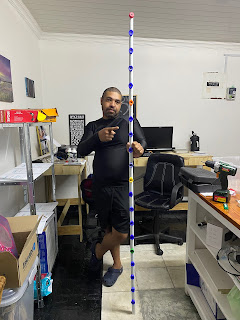Birth of the Conservation Creative
Conservation Design personifies a ground-breaking methodology that merges design thinking with conservation strategies, to tackle complex environmental challenges. This approach emphasises interdisciplinary collaboration by encouraging experts from various fields of design, architecture, ecology, and more, to work together.
One key feature is the promotion of creativity and innovation as design thinkers within the conservation field often employ cutting-edge technologies, sustainable materials, and unconventional strategies to address environmental issues. Creative thinkers possess the potential to offer imaginative and innovative solutions, given the opportunity.
Conservation organisations similarly have the noble mission of safeguarding our natural world. Unfortunately, organisations’ stringent job requirements unintentionally limit the potential impact they could achieve as emphasis on formal education in conservation or animal care, time and again exclude individuals from diverse educational backgrounds who bring a wealth of creative problem-solving skills.
While specialised knowledge is undoubtedly necessary, there is a missed opportunity in overlooking the potential of innovative thinking from creative individuals, whose unique talents could complement the efforts of traditional conservationists.
By firmly sticking to stringent prerequisites, organisations may unknowingly limit their ability to find holistic and innovative solutions to complex challenges. A more inclusive approach that combines specialised training with diverse perspectives could lead to ground-breaking solutions that go beyond convention and truly propel the field of conservation forward.
Seeing this potential challenge, I find myself envisioning a new and unique job role that could shape the future—a concept one could call the "Conservation Creative." The role envisions active involvement within a conservation organisation, spanning from Education Departments to preparedness planning, rehabilitation and beyond. This innovative role stands as a kind of conductor, weaving together the worlds of design and the complex tapestry of wildlife challenges.
With a deep grasp of design thinking, the Conservation Creative emerges to provide the organisation with an unconventional problem solving approach, injecting fresh and innovative perspectives into various departments. Inspired by the way animals naturally behave, the habitats they need, and the things they love, these creatives curate a blend of design elements that offer tactile educational experiences, nurturing rehabilitation spaces, stimulating activities, and restful havens, making the journey from rehabilitation to freedom smoother.
As we explore a range of innovative solutions for conservation challenges, it is important to remember that some of these scenarios are hypothetical. While this specific job title might not exist yet, the concepts we are delving into closely mirror the types of tasks that could fall under the responsibilities of a Conservation Creative.
It is important to clarify that I am in no way advocating for creatives to step into conservation roles without the necessary formal education. I am however, merely suggesting that there is a land of possibility if new roles and job titles are carved out. We have the potential to learn hands-on experience in animal care, understand their behaviours, and then seamlessly integrate this practical experience with our design degrees. This synergy could create a powerful dynamic, allowing us to hit the ground running, armed with both practical and theoretical expertise, ultimately bridging the gap between creativity and conservation.
As we journey through these concepts, we uncover not only strategies for improving animal care, but similarly the incredible potential that a Conservation Creative could bring to the table for conservation organisations. This exploration showcases the forward-thinking nature of the role, an individual who can blend creativity and empathy to create a harmonious coexistence between humans and the diverse inhabitants of the animal kingdom.
In recent years, the fields of design and conservation have increasingly recognised their interdependence and the potential for collaboration. Design principles have been applied to various conservation efforts, from creating sustainable architecture, which minimises environmental impact, to designing products that raise awareness about endangered species and ecosystems. This synergy between design and conservation highlights the importance of interdisciplinary collaboration in addressing complex environmental challenges and promoting a more sustainable future.
While specialised knowledge is undoubtedly necessary, there is a missed opportunity in overlooking the potential of innovative thinking from creative individuals, whose unique talents could complement the efforts of traditional conservationists.
By firmly sticking to stringent prerequisites, organisations may unknowingly limit their ability to find holistic and innovative solutions to complex challenges. A more inclusive approach that combines specialised training with diverse perspectives could lead to ground-breaking solutions that go beyond convention and truly propel the field of conservation forward.
Seeing this potential challenge, I find myself envisioning a new and unique job role that could shape the future—a concept one could call the "Conservation Creative." The role envisions active involvement within a conservation organisation, spanning from Education Departments to preparedness planning, rehabilitation and beyond. This innovative role stands as a kind of conductor, weaving together the worlds of design and the complex tapestry of wildlife challenges.
An organisation called Design for Wildlife is a collective of artists, architects, and engineers, united by a shared mission: to tackle complex wildlife-related challenges in partnership with conservation organisations. The organisation's overarching goal is to find innovative, economically sustainable solutions to issues such as human-wildlife conflict, habitat degradation, and the protection of endangered species. To learn more, you can visit their website: www.designforwildlife.com.
The birth of the Conservation Creative seeks to redefine the relationship between creativity and responsibility, finding that sweet spot between humanity and nature.



Comments
Post a Comment